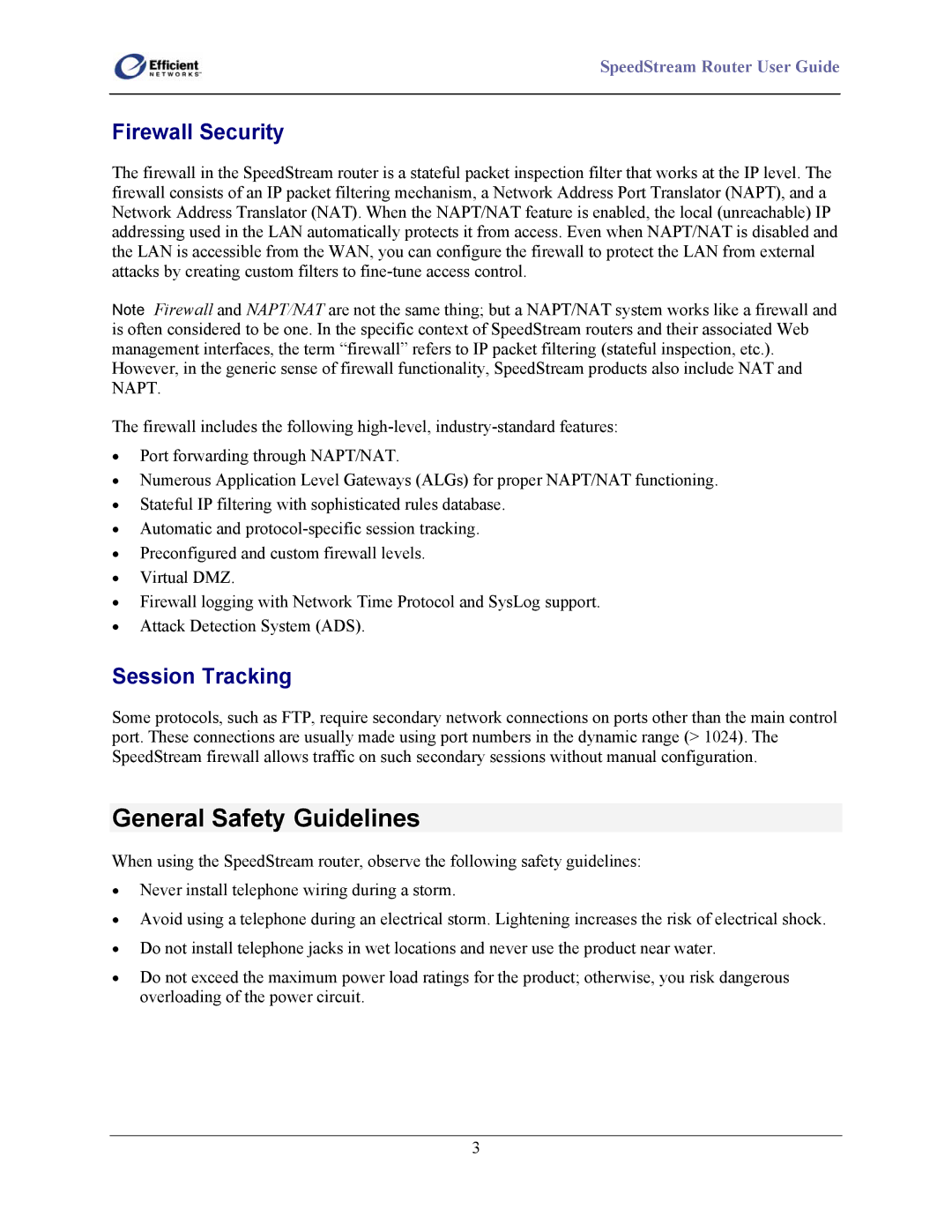
SpeedStream Router User Guide
Firewall Security
The firewall in the SpeedStream router is a stateful packet inspection filter that works at the IP level. The firewall consists of an IP packet filtering mechanism, a Network Address Port Translator (NAPT), and a Network Address Translator (NAT). When the NAPT/NAT feature is enabled, the local (unreachable) IP addressing used in the LAN automatically protects it from access. Even when NAPT/NAT is disabled and the LAN is accessible from the WAN, you can configure the firewall to protect the LAN from external attacks by creating custom filters to
Note Firewall and NAPT/NAT are not the same thing; but a NAPT/NAT system works like a firewall and is often considered to be one. In the specific context of SpeedStream routers and their associated Web management interfaces, the term “firewall” refers to IP packet filtering (stateful inspection, etc.). However, in the generic sense of firewall functionality, SpeedStream products also include NAT and NAPT.
The firewall includes the following
•Port forwarding through NAPT/NAT.
•Numerous Application Level Gateways (ALGs) for proper NAPT/NAT functioning.
•Stateful IP filtering with sophisticated rules database.
•Automatic and
•Preconfigured and custom firewall levels.
•Virtual DMZ.
•Firewall logging with Network Time Protocol and SysLog support.
•Attack Detection System (ADS).
Session Tracking
Some protocols, such as FTP, require secondary network connections on ports other than the main control port. These connections are usually made using port numbers in the dynamic range (> 1024). The SpeedStream firewall allows traffic on such secondary sessions without manual configuration.
General Safety Guidelines
When using the SpeedStream router, observe the following safety guidelines:
•Never install telephone wiring during a storm.
•Avoid using a telephone during an electrical storm. Lightening increases the risk of electrical shock.
•Do not install telephone jacks in wet locations and never use the product near water.
•Do not exceed the maximum power load ratings for the product; otherwise, you risk dangerous overloading of the power circuit.
3
